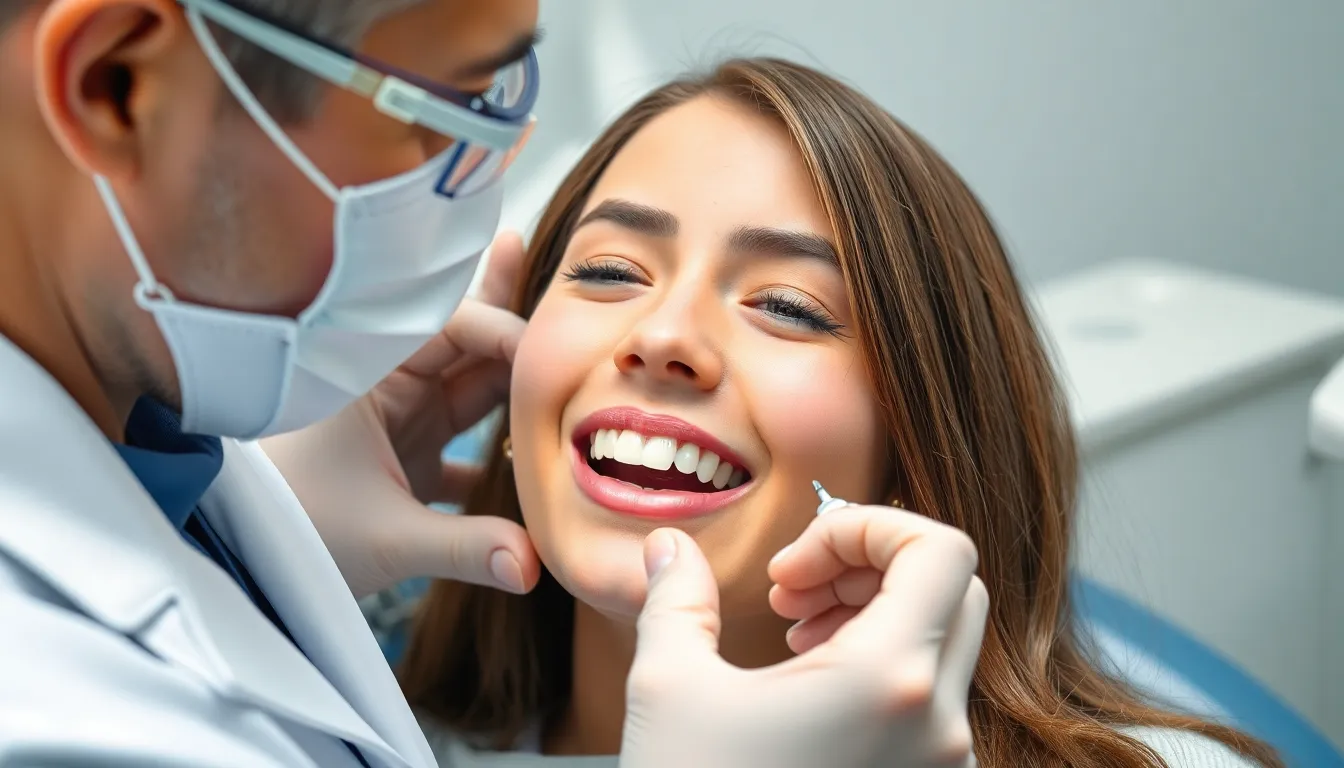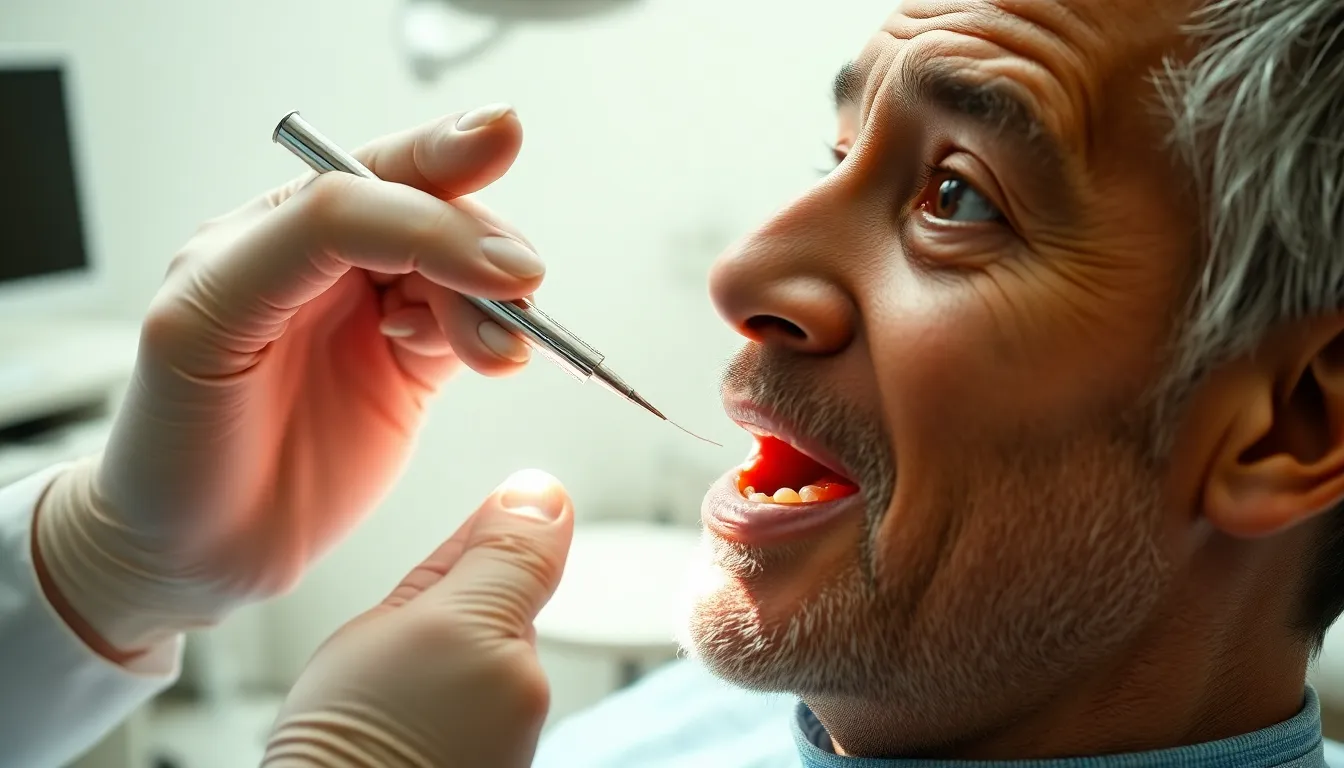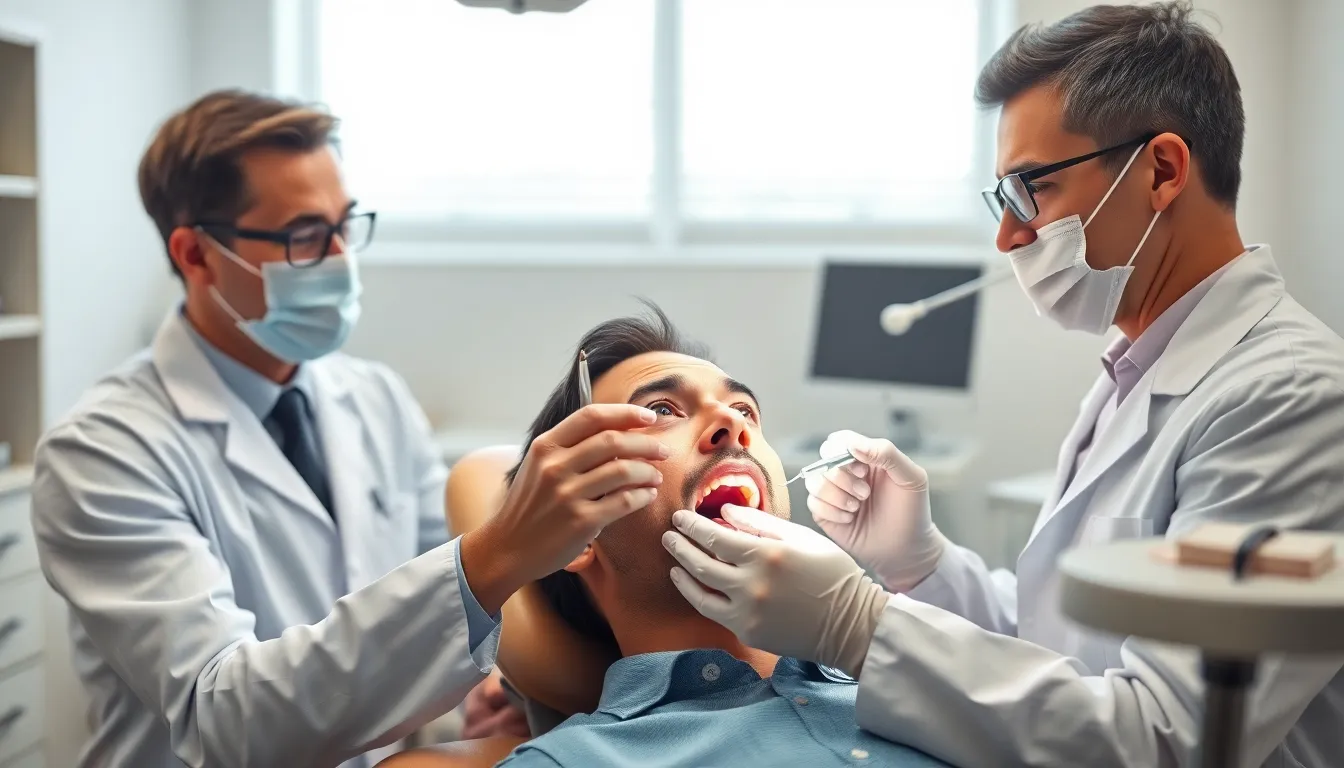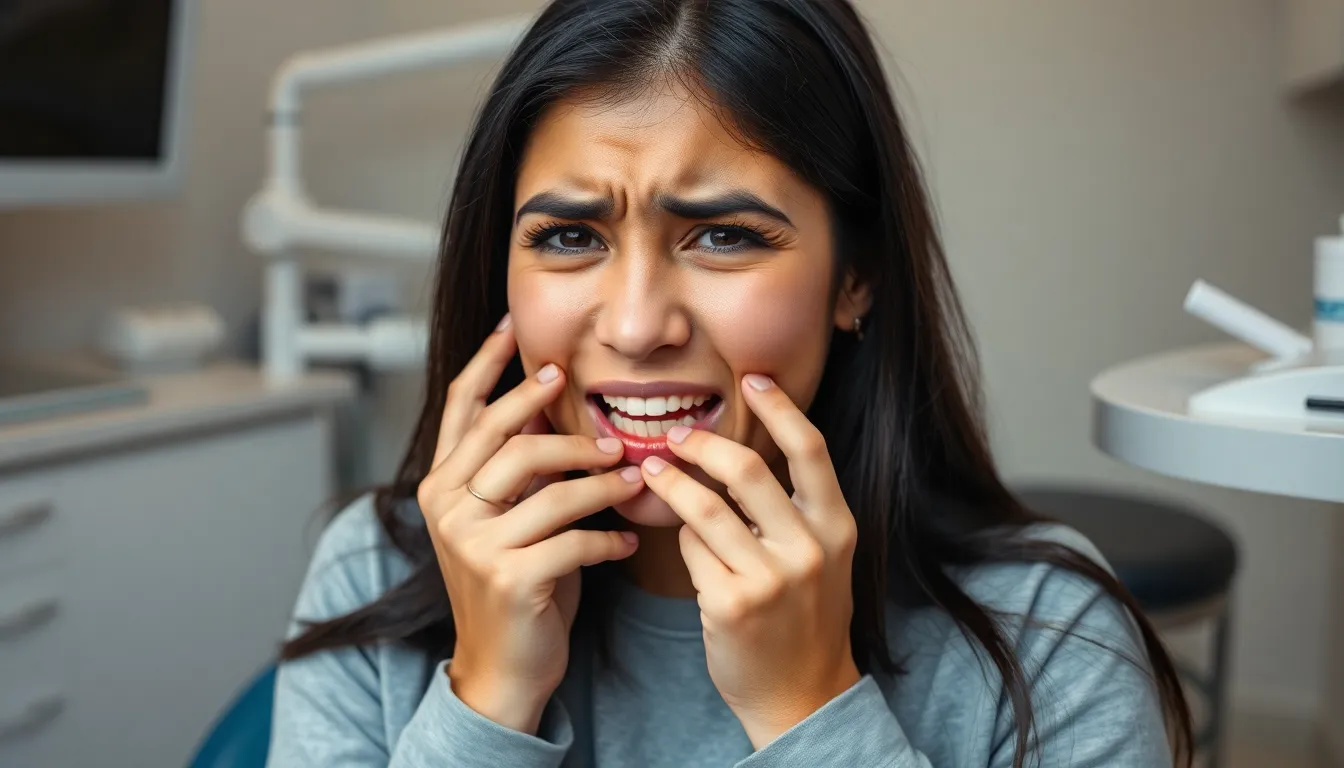Struggling with how to chew with braces? You’re not alone. Many new braces wearers find that one of the biggest adjustments is learning how to eat comfortably without causing damage to their orthodontic work.
When you first get braces, your teeth may feel sensitive and your normal eating habits might need some modification. Knowing the right techniques for chewing can make your orthodontic journey much more comfortable and prevent unnecessary trips to your orthodontist for repairs. With a few simple strategies, you’ll be able to enjoy most of your favorite foods while protecting your investment in a beautiful smile.
Understanding the Challenges of Eating With Braces
Eating with braces transforms ordinary meals into potential obstacles that require careful navigation. Your orthodontic hardware creates physical barriers between your teeth and food, making normal biting and chewing movements more complex. Brackets and wires create many small spaces where food particles easily become trapped, increasing the risk of cavities and gum inflammation if not properly cleaned.
One of my patients, Emma, described her first week with braces as “learning to eat all over again.” She initially struggled with simple foods like sandwiches but quickly adapted by cutting everything into smaller pieces. Most patients experience similar adjustment periods that typically last 1-2 weeks.
Pain and sensitivity represent another important challenge, especially during the first 3-5 days after adjustments. Your teeth shift positions during orthodontic treatment, causing temporary discomfort that affects your ability to chew normally. Many foods that were once enjoyable might suddenly cause pain when pressure is applied.
Damage to braces presents a constant concern with certain foods. Hard, crunchy, or sticky items can dislodge brackets or bend wires, potentially extending your overall treatment time. Each repair appointment adds approximately 2-4 weeks to your orthodontic timeline, according to our office statistics.
Foods to Avoid With Braces

Knowing which foods to avoid with braces is essential for protecting your orthodontic hardware and ensuring your treatment progresses without delays. Certain foods pose important risks to brackets and wires, potentially causing damage that requires extra appointments and extends your treatment timeline.
Hard and Crunchy Foods
Hard and crunchy foods create excessive pressure on your braces, often resulting in broken brackets or bent wires. Foods like nuts, hard candies, popcorn, ice, and raw carrots are particularly problematic as they require forceful biting that can damage your orthodontic work. Dr. Todd B. Harris often tells patients about a teenager who came in with three broken brackets after biting into an unpopped popcorn kernel during a movie night. “That single moment added six weeks to his treatment plan,” he explains. Instead of completely eliminating vegetables like carrots from your diet, try cutting them into thin strips or cooking them until soft to make them more braces-friendly.
Sticky and Chewy Foods
Sticky and chewy foods become trapped in your braces, creating cleaning challenges and potential damage to the orthodontic appliance. Caramel, chewing gum, taffy, and gummy candies easily adhere to brackets and wires, often requiring important effort to remove. Emma, a college student with braces, learned this lesson the hard way after enjoying saltwater taffy at a beach vacation. “I spent nearly an hour trying to clean my braces afterward, and still ended up with a loose wire,” she recounts. These foods not only risk damage to your braces but also create perfect hiding spots for bacteria, increasing your risk of tooth decay and gum inflammation during treatment. Choosing alternative treats like soft cookies, ice cream, or yogurt satisfies your sweet tooth without compromising your braces.
Safe Chewing Techniques for Braces Wearers

Mastering proper chewing techniques helps protect your orthodontic hardware and minimizes discomfort during your treatment journey. These proven strategies allow you to enjoy meals while preventing damage to your braces.
Taking Small Bites
Cutting food into smaller, manageable pieces significantly reduces stress on your braces and makes chewing easier. This technique is particularly important when eating tougher foods like steak, chicken, or raw vegetables. Dr. Todd B. Harris recommends using a knife and fork to pre-cut items that would normally require a big bite. “I’ve seen patients extend their treatment time by months simply because they didn’t take the time to cut their food properly,” he explains. Foods like apples, sandwiches, and pizza benefit from being cut into bite-sized portions rather than biting directly with your front teeth. Many patients find that adopting this habit not only protects their braces but also promotes better digestion as smaller bites are chewed more thoroughly.
Chewing Slowly and Mindfully
Eating at a relaxed pace gives you greater control over your bite and significantly reduces the risk of accidentally damaging your braces. Patients who rush through meals often report more discomfort and hardware issues than those who take their time. Emma, a 16-year-old patient, shares, “I learned to eat more slowly after breaking a bracket on my second day with braces. Now I focus on each bite and haven’t had any problems since.” Conscious chewing distributes pressure evenly across your teeth rather than concentrating force on a single bracket or wire. Your back teeth (molars and premolars) are naturally stronger and better equipped for chewing, making them ideal for breaking down food while protecting your more vulnerable front brackets. For optimal comfort, especially during the first few days after adjustments, stick to softer foods like yogurt, mashed potatoes, scrambled eggs, and soups that require minimal chewing effort. Avoiding sticky items such as caramel, taffy, and chewy candies prevents pulling on brackets, while steering clear of hard, crunchy foods like popcorn, nuts, and hard candies prevents wire damage.
Preparing Food for Easier Chewing

Proper food preparation significantly reduces discomfort and prevents damage to your braces during meals. Making simple adjustments to how you prepare your food creates a more pleasant eating experience throughout your orthodontic treatment.
Cutting Food Into Smaller Pieces
Cutting your food into bite-sized pieces makes a tremendous difference when eating with braces. Small, manageable portions require less chewing effort and dramatically lower the risk of dislodging brackets or bending wires. Many orthodontic patients discover that slicing foods like sandwiches, fruits, and meats into quarter-sized pieces prevents uncomfortable pressure on their braces.
Dr. Todd B. Harris often tells his patients, “The extra 30 seconds it takes to cut your food properly can save you an extra month of treatment time.” Food particles also have fewer places to hide when you’re dealing with smaller pieces, making your oral hygiene routine more effective after meals. Patients who adopt this simple habit typically report fewer emergency appointments for broken hardware and less frustration during mealtimes.
Cooking Foods to Softer Textures
Transforming harder foods through cooking creates braces-friendly options without eliminating favorite foods from your diet. Steaming or boiling vegetables until fork-tender makes them gentle on your orthodontic hardware while preserving essential nutrients. Raw carrots, apples, and celery that normally pose risks to braces become perfectly safe when cooked properly.
Emma, a college student with braces, shares, “I thought I’d have to give up my favorite vegetables completely, but roasting them until they’re soft let me enjoy them without worrying about damaging my braces.” Incorporating soft foods like mashed potatoes, yogurt, soups, scrambled eggs, and well-cooked pasta provides essential nutrition while minimizing discomfort during your treatment. The temperature of food matters too—moderately warm foods tend to cause less sensitivity than very hot or cold options, especially in the days following adjustment appointments.
Managing Pain and Discomfort While Eating

Eating with braces doesn’t have to be painful if you adopt the right techniques. Your comfort while chewing depends on food choices, proper eating habits, and knowing when to use orthodontic aids.
Start With Soft Foods
Soft foods require minimal chewing effort, making them ideal for braces wearers, especially after adjustment appointments. Soups, mashed potatoes, yogurt, and scrambled eggs provide nourishment without causing pain to sensitive teeth. Patients like Emma report feeling more confident about their eating experience after incorporating more soft foods into their diet following adjustment appointments.
“Many of my patients find that a soft food diet for 3-4 days after adjustments significantly reduces their discomfort,” notes Dr. Todd B. Harris. “This simple change allows the teeth and gums to adjust to the new pressure without the added stress of difficult chewing.”
Use Proper Chewing Techniques
Cut food into small, manageable pieces to reduce pressure on your braces and lower the risk of breaking brackets or wires. Chew slowly and carefully, primarily using your back teeth which are stronger and less affected by orthodontic hardware. Your back molars handle pressure better than front teeth, protecting your braces from unnecessary strain.
Eating in a calm environment makes a noticeable difference in comfort levels. Sitting down and taking your time to chew thoroughly decreases discomfort and enhances your overall eating experience with braces.
Timing Meals Around Adjustment Appointments
Plan your meals strategically around orthodontic appointments to minimize discomfort. Your teeth typically experience heightened sensitivity for 2-3 days following adjustments as they begin shifting. During this period, stick exclusively to soft foods that require minimal chewing pressure.
Avoid hard, sticky, or crunchy foods immediately after adjustments to prevent damage to your braces and reduce pain. Gradually reintroduce firmer foods as discomfort subsides, usually within 3-4 days following your appointment.
Emma shares, “I always prepare a batch of smoothies and soup before my adjustment appointments. Having these ready meals saved me from the pain of trying to chew when my teeth felt most sensitive.”
Using Orthodontic Wax
Orthodontic wax serves as a protective barrier between your braces and the soft tissues in your mouth. Apply a small amount to brackets or wires that irritate the inside of your cheeks or lips to reduce soreness and prevent painful cuts while eating.
Before meals, place a small piece of wax over any particularly sharp areas to shield your gums and cheeks during chewing. Remove and replace the wax as needed to maintain comfort throughout your meal.
Best Foods to Eat With Braces
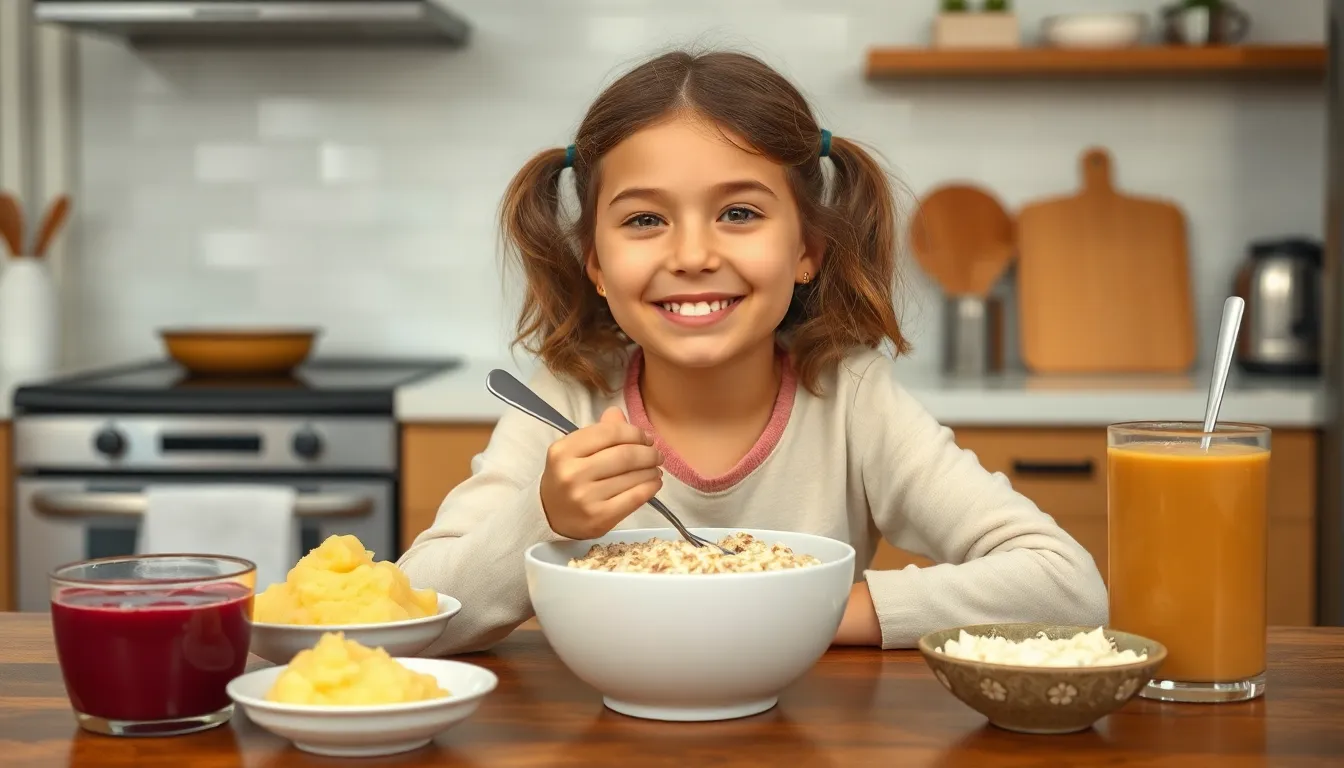
Choosing the right foods during orthodontic treatment protects your braces while ensuring proper nutrition. Your food choices can significantly impact both comfort and the integrity of your orthodontic appliances.
Soft Food Options
Soft foods require minimal chewing and create less pressure on your braces, making them ideal choices especially after adjustment appointments. Soups and broths provide excellent nutrition without requiring important chewing effort. Mashed potatoes offer a filling option that’s gentle on sensitive teeth and brackets. Yogurt delivers protein and calcium without any challenging textures. Scrambled eggs serve as a protein-rich breakfast that won’t damage your orthodontic hardware. Smoothies and milkshakes combine nutrition and taste while bypassing extensive chewing altogether. Oatmeal and soft cereals provide essential fiber without the crunch that might damage brackets. Cooked vegetables that have been steamed until tender maintain nutritional value while being braces-friendly.
Dr. Harris often tells patients, “The first 3-4 days after an adjustment are when soft foods become your best friends. Many of my patients create a ‘post-adjustment menu’ of their favorite soft foods to help them through this period.”
Nutritious Alternatives to Hard Foods
Maintaining good nutrition with braces doesn’t mean sacrificing healthy options. Replace crunchy raw vegetables with steamed or boiled versions that retain nutrients while becoming soft enough for safe consumption. Swap hard fruits like apples with softer alternatives such as bananas or peeled peaches that provide similar nutritional benefits. Use nut butters instead of whole nuts to get protein and healthy fats without risking damage to your orthodontic appliances. Try rice, pasta, or soft grains as alternatives to tough breads or crackers for necessary carbohydrates in your diet.
Oral Hygiene After Eating With Braces
Maintaining proper oral hygiene after meals becomes critically important when you have braces. Food particles easily get trapped around brackets and wires, creating perfect hiding spots for bacteria that can lead to plaque buildup and cavities. Rinsing your mouth thoroughly with water immediately after eating helps dislodge larger food particles before they settle between your braces.
Brushing your teeth should follow every meal or snack, using a soft-bristled toothbrush and fluoride toothpaste to clean around the brackets and along the gumline. Specialized orthodontic brushes with V-shaped bristles can reach areas regular toothbrushes might miss, ensuring more thorough cleaning around your hardware.
“Many of my patients underestimate how quickly food debris can contribute to decay when trapped in braces,” explains Dr. Todd B. Harris. “I recommend carrying a travel-sized oral hygiene kit for cleaning after meals away from home – this simple habit can save thousands in potential dental work later.”
Interdental cleaning tools prove essential for thorough braces maintenance:
- Floss threaders help guide dental floss under wires and between brackets
- Water flossers provide powerful water streams to flush out debris from hard-to-reach areas
- Interdental brushes clean the spaces between teeth and around brackets where regular brushes can’t reach
- Proxy brushes fit perfectly around wires and between brackets to remove stubborn food particles
Emma, a college student in her second year of orthodontic treatment, learned this lesson the hard way. “I skipped my after-lunch cleaning routine during finals week and developed two small cavities around my brackets. Now I keep cleaning supplies in my backpack, car, and desk drawer so I’m never without them.”
Antimicrobial mouthwash serves as an excellent final step in your cleaning routine, reaching areas you might have missed while reducing bacteria that cause bad breath and gum inflammation. Swishing for 30 seconds after brushing and flossing helps maintain optimal oral health throughout your orthodontic journey.
Regular dental checkups every 3-4 months allow your dentist to professionally clean areas you might miss and catch potential issues early before they develop into serious problems. These appointments complement your orthodontic visits and ensure your teeth remain healthy beneath your braces.
Conclusion
Learning to chew with braces takes patience but becomes second nature with practice. By cutting food into smaller pieces preparing meals thoughtfully and focusing on braces-friendly options you’ll protect your orthodontic investment while keeping discomfort to a minimum.
Remember that maintaining excellent oral hygiene is non-negotiable during your treatment. Your efforts now—choosing the right foods using proper chewing techniques and cleaning thoroughly after meals—will pay off with straighter teeth and a healthier smile.
The adjustment period is temporary but the results will last a lifetime. Stay committed to these strategies and you’ll navigate your orthodontic journey with confidence and minimal setbacks.
Frequently Asked Questions
What foods should I avoid with braces?
Avoid hard foods like nuts, popcorn, and raw carrots, as they can break brackets or bend wires. Stay away from sticky treats such as caramel, chewing gum, and taffy, which can get trapped in braces and are difficult to clean out. These foods not only risk damaging your orthodontic hardware but also create hiding spots for bacteria, increasing your chances of developing tooth decay and gum inflammation.
How long does it take to adjust to eating with braces?
Most people adapt to eating with braces within 1-2 weeks. During this adjustment period, you’ll learn to take smaller bites, chew more carefully, and modify how you consume certain foods. The initial discomfort and awkwardness gradually diminish as you develop new eating habits. Be patient with yourself during this learning process, as everyone’s adaptation timeline varies slightly.
What can I eat after getting my braces tightened?
Stick to soft foods for 3-4 days after adjustments, including soups, yogurt, mashed potatoes, scrambled eggs, smoothies, and pasta. These foods require minimal chewing and won’t put pressure on your sensitive teeth. Avoid anything crunchy, hard, or chewy during this time. Cold foods like ice cream can also provide soothing relief from orthodontic discomfort.
How should I prepare foods to make them braces-friendly?
Cut food into small, bite-sized pieces to reduce chewing effort and prevent damage to your braces. Cook harder foods until they’re softer—steam or boil vegetables, slow-cook meats until tender, and opt for softer fruits. Consider alternative preparation methods like roasting vegetables or making smoothies. These simple adjustments allow you to enjoy most foods while protecting your orthodontic hardware.
How can I manage pain while eating with braces?
Time your meals around adjustment appointments, opting for softer foods when discomfort peaks. Use orthodontic wax to shield sensitive areas from irritation. Chew slowly using your back teeth rather than biting with front teeth. Consider taking over-the-counter pain relievers before meals if recommended by your orthodontist. Eating in a calm environment and avoiding rushing through meals can also minimize discomfort.
What cleaning routine should I follow after eating with braces?
Rinse your mouth with water immediately after eating to dislodge large food particles. Brush with a soft-bristled toothbrush and fluoride toothpaste after every meal. Use interdental cleaning tools like floss threaders or water flossers to clean between brackets and under wires. Finish with an antimicrobial mouthwash to reduce bacteria. Carry a travel-sized oral hygiene kit for cleaning after meals away from home.
What are safe snack options with braces?
Safe snacks include yogurt, soft fruits (bananas, berries), applesauce, cheese, soft cookies, pudding, and smoothies. Avoid popcorn, chips, nuts, hard candies, and chewy treats. If you crave something crunchy, try softer alternatives like cheese puffs that dissolve easily. For sweets, choose ice cream or soft baked goods instead of sticky or hard candies that could damage your braces.
How can I tell if I’ve damaged my braces while eating?
Signs of damage include loose or broken brackets (the metal or ceramic pieces attached to your teeth), bent or protruding wires, missing elastic bands, or unusual gaps in your braces. You might feel sharp edges or experience new discomfort. If you notice any of these issues after eating, contact your orthodontist promptly. Continuing with damaged braces can extend your overall treatment time.


